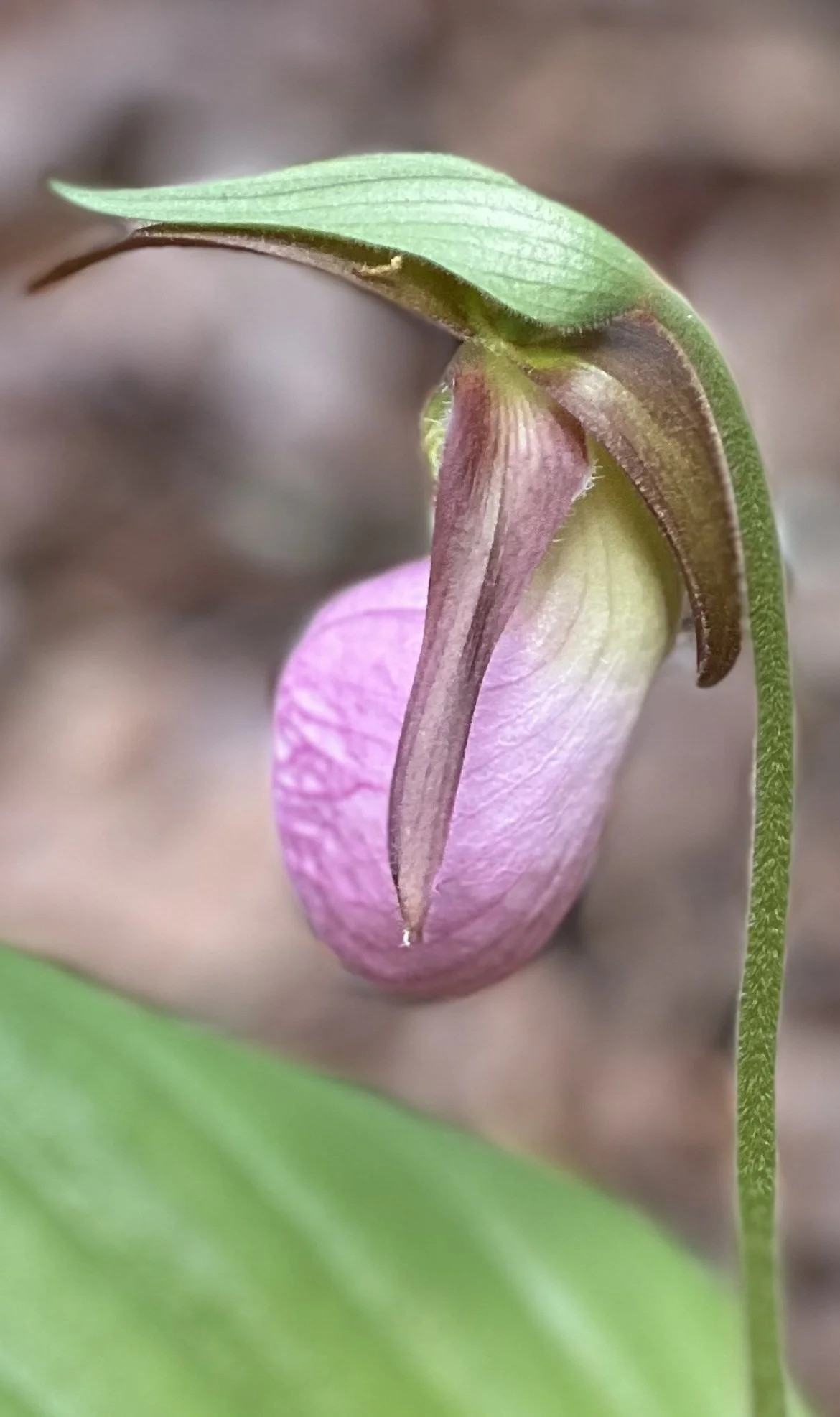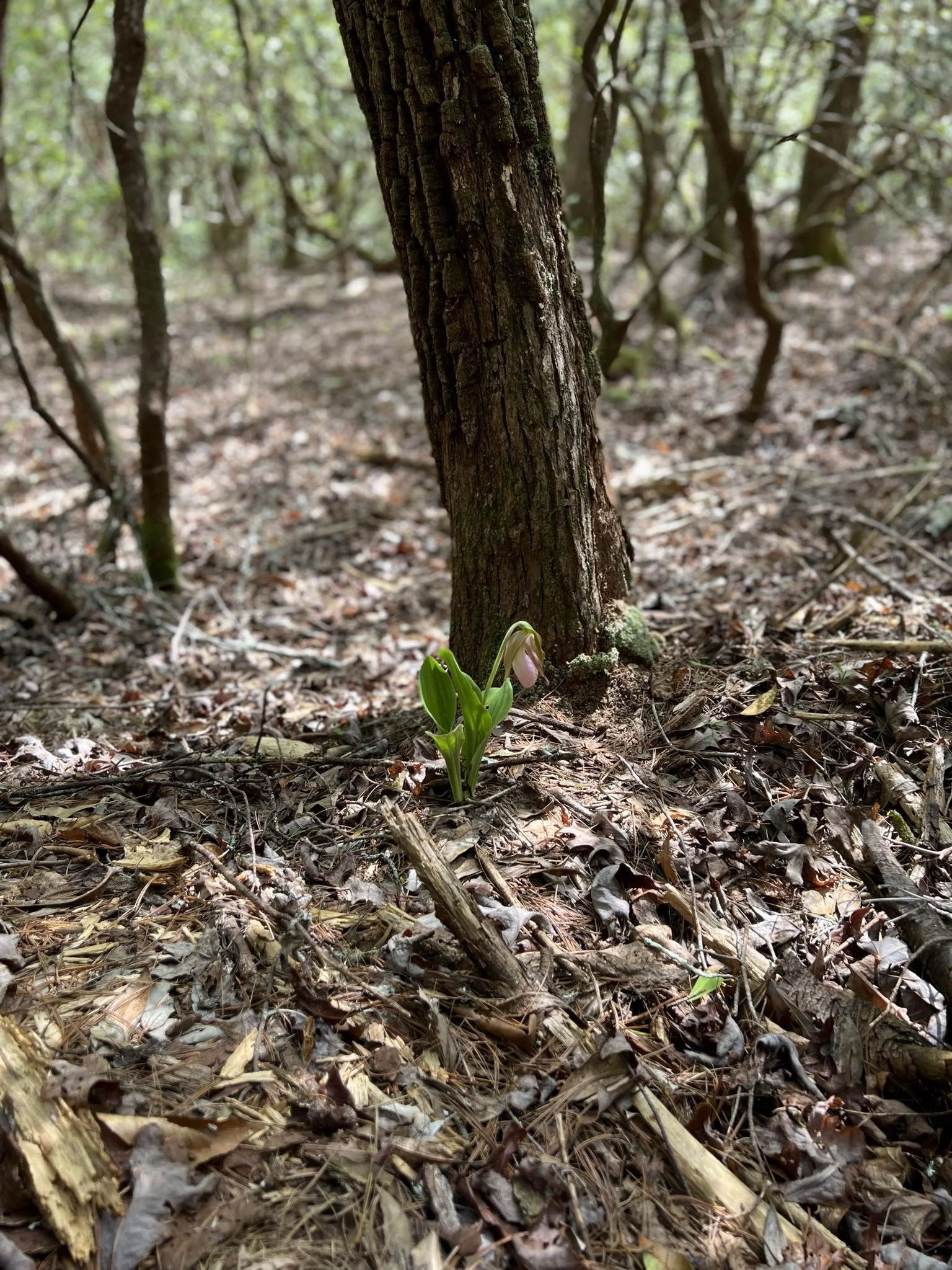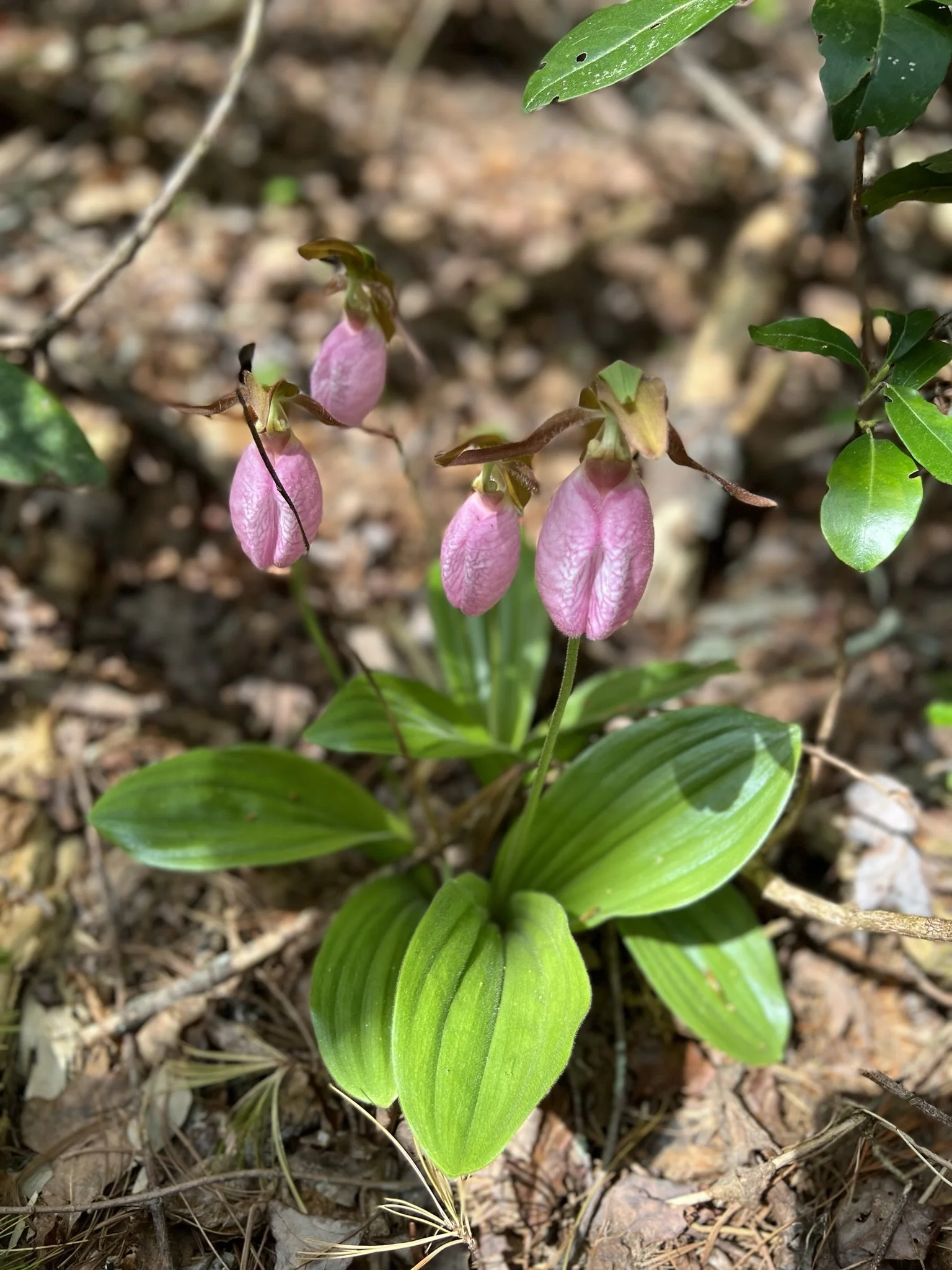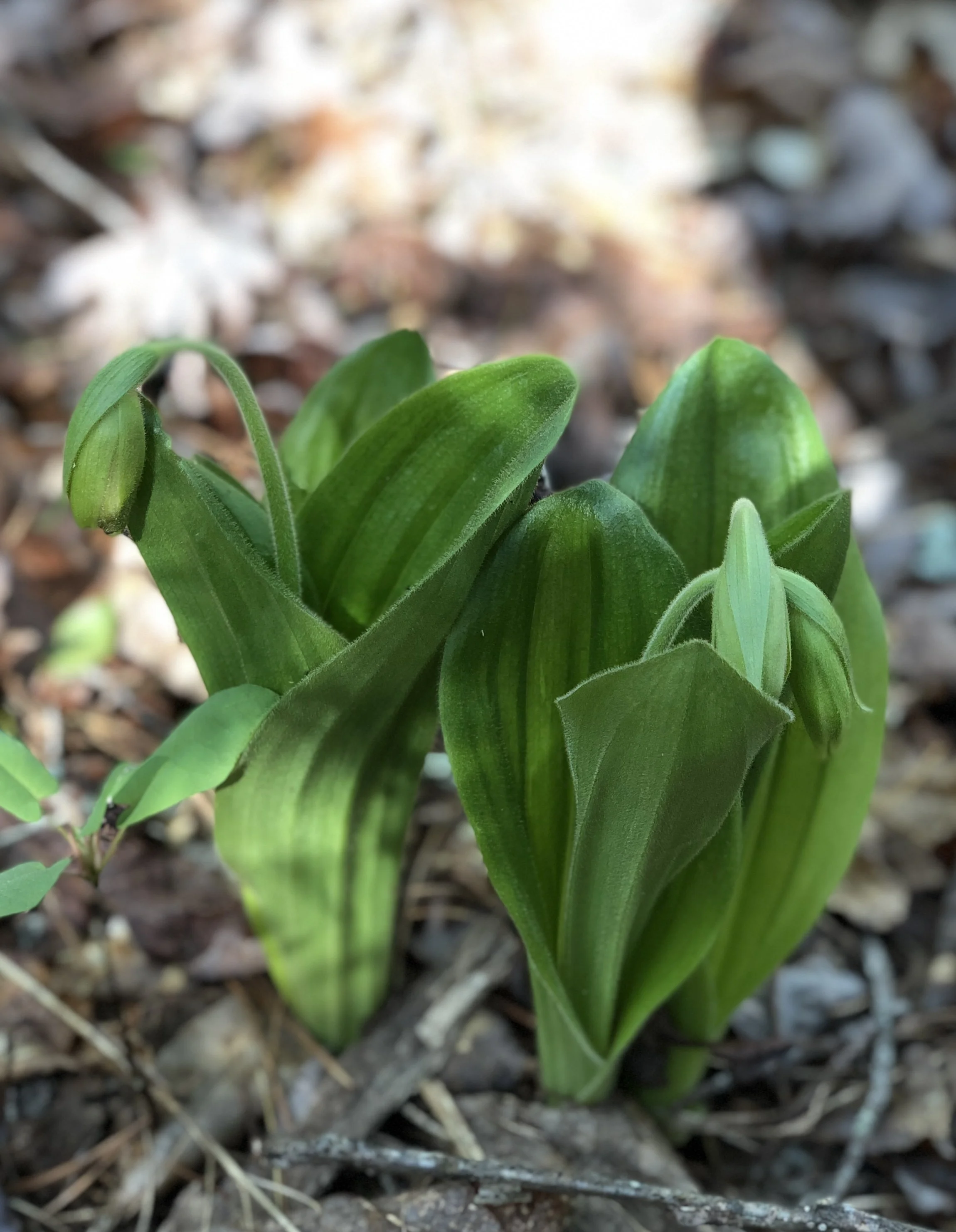The pink lady slippers parade
On a wellness walk in late April a few years ago, we stumbled upon the most alluring splash of color blooming at the base of these giant pine trees. We came to discover several stands of Pink Lady Slippers, a rare nearly endangered species of native orchids, quietly flowering in the western slope of Taliama.
They are very delicate orchids that thrive on a certain enzyme from pine trees. Once we observed this, we looked further off trail to other giant pine trees to be rewarded with numerous stands of Pink Lady Slippers. Perhaps, three dozens of them sprinkled through the forest in clusters of 1, 2, 3 and sometimes, but rarely 4 and 6.
Considered a perennial herb with two large basal leaves and a single flower stalk topped with a showy pink flower. Leaves are 3.5 - 12 inches long and 1 - 6 inches wide, green and hairy on the upper surface, gray on the lower surface, with bluntly pointed tips and raised, parallel veins. The flower stalk is up to 2 feet tall. The flower is up to 2.6 inches long, with a showy, pink (rarely white), pouch- or slipper-shaped lip petal and two narrow, twisted, reddish-brown or green outwardly spreading petals. A large, green sepal curves over the top of the flower. Fruit is an oval capsule, about 1.4 inches long, filled with thousands of dustlike seeds.
From Georgia Biodiversity.
Pink Lady Slippers are listed among the 103 plants protected in Georgia by the provisions of the Georgia Wildflower Preservation Act of 1973. While they are not rare they have a history of being poached from the wild, a deplorable practice as they rarely survive transplanting.
Habitat
Upland pine and mixed pine-hardwood forests with acidic soils; in the mountains, it often occurs near edges of Rhododendron thickets and mountain bogs.
Life History
Pink Lady’s Slipper flowers are pollinated by bees that are attracted to their color and fragrance. A bee enters the colorful, inflated lip through a one-way opening and quickly discovers that there is neither pollen nor nectar available, and that it cannot readily escape. The bee can exit the flower only through two openings at the back of the lip. As it leaves from one of these openings, its back brushes against the female part of the flower, depositing a packet of pollen from the last PLS flower that it visited, and picking up a new packet of pollen from the male part of the flower. The packet is taken to the next visited flower; the pollen is held in small packets that stick to the bee’s back where it is not accessible to the bee and can’t be scraped off by the bee's legs. Bees soon learn to avoid these flowers because they fail to provide nectar or pollen; as a result, few flowers are pollinated.
Although flowers remain on the plants for several weeks to increase the chances of pollination, fewer than 10% of plants in a population will produce fruit in a given year. Fortunately, each fruit contains thousands of seeds. But the seeds are tiny, containing no stored food reserves, and must land on a patch of soil containing a specific fungus that provides nutrients for germination and subsequent plant growth. Pink Lady’s Slipper plants dug from the wild and transplanted into gardens rarely reproduce due to the lack of this fungus. They also fail to thrive and will die after a couple of years, unless the specific fungus is present at the transplant site.
Survey Recommendations
Surveys are best conducted during flowering (April–June); they go dormant soon after fruiting (May–July).
Range
Throughout eastern North America, the upper Midwest, and adjacent Canadian provinces.
Threats
Logging, clearing, or development of upland forests, poaching, and exotic invasive species, especially Japanese honeysuckle.
Georgia Conservation Status
Pink Lady’s Slipper is relatively abundant and has been observed in almost all north Georgia counties, although many of these populations, especially in the metro Atlanta area, have been destroyed. Large numbers of plants are known on national forest land. It is state-listed primarily because of the threat posed by poachers, who dig the plants for their gardens or for commercial sale. Plants dug from the wild and transplanted into gardens rarely survive for very long.
Conservation Management Recommendations
Periodically apply prescribed fire; occasional fire in upland forests will maintain the pine-dominated forests and patchy hardwood canopy that favor Pink Lady’s Slipper. Prosecute plant poachers. Protect known sites from clearcutting and development. Eradicate exotic pest plants such as Japanese honeysuckle. Never buy plants of this species without determining that it came from an ethical source.
We encourage you to sign up for a Wellness Walk in April and May for the best chance to witness these little wonders.









